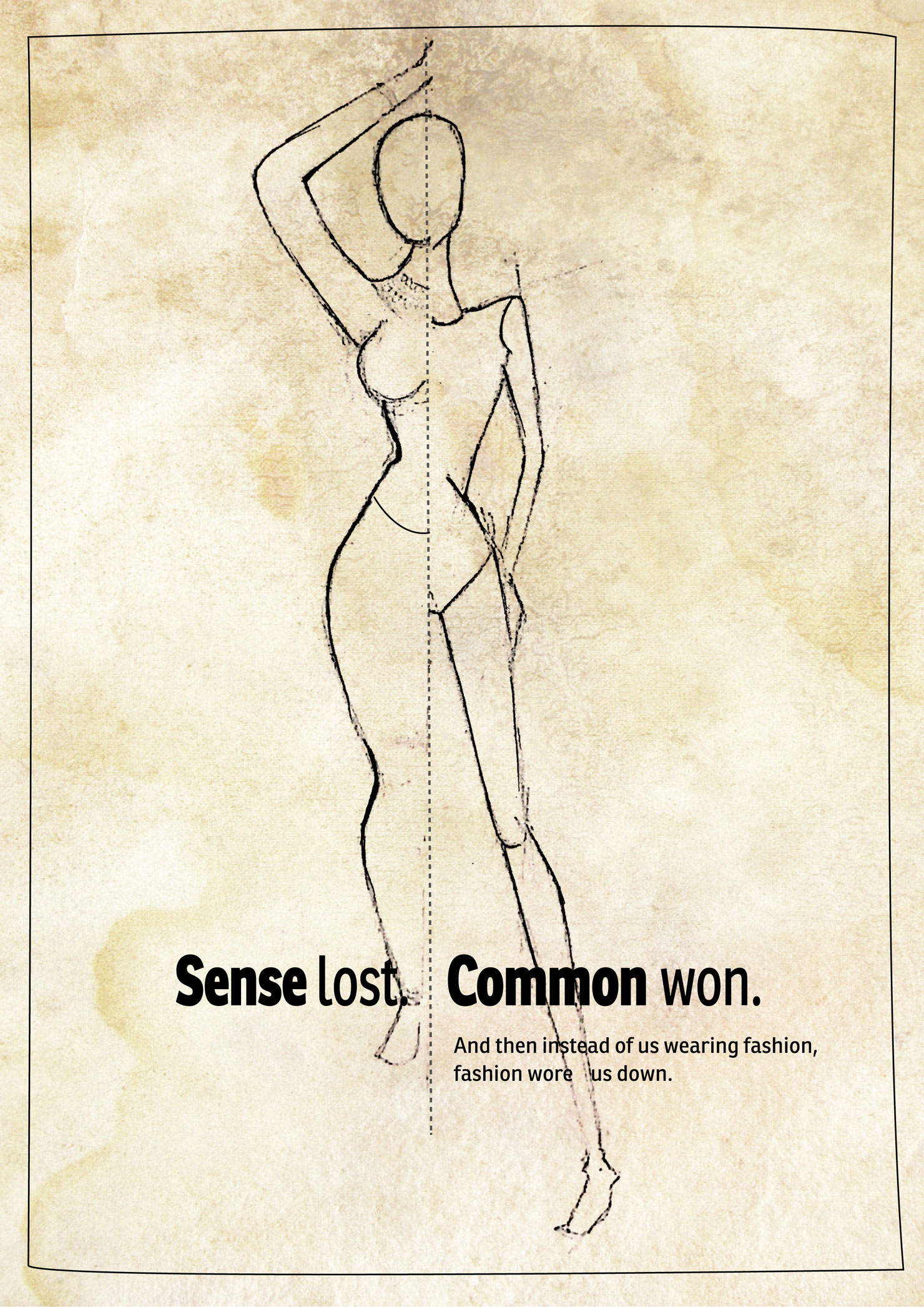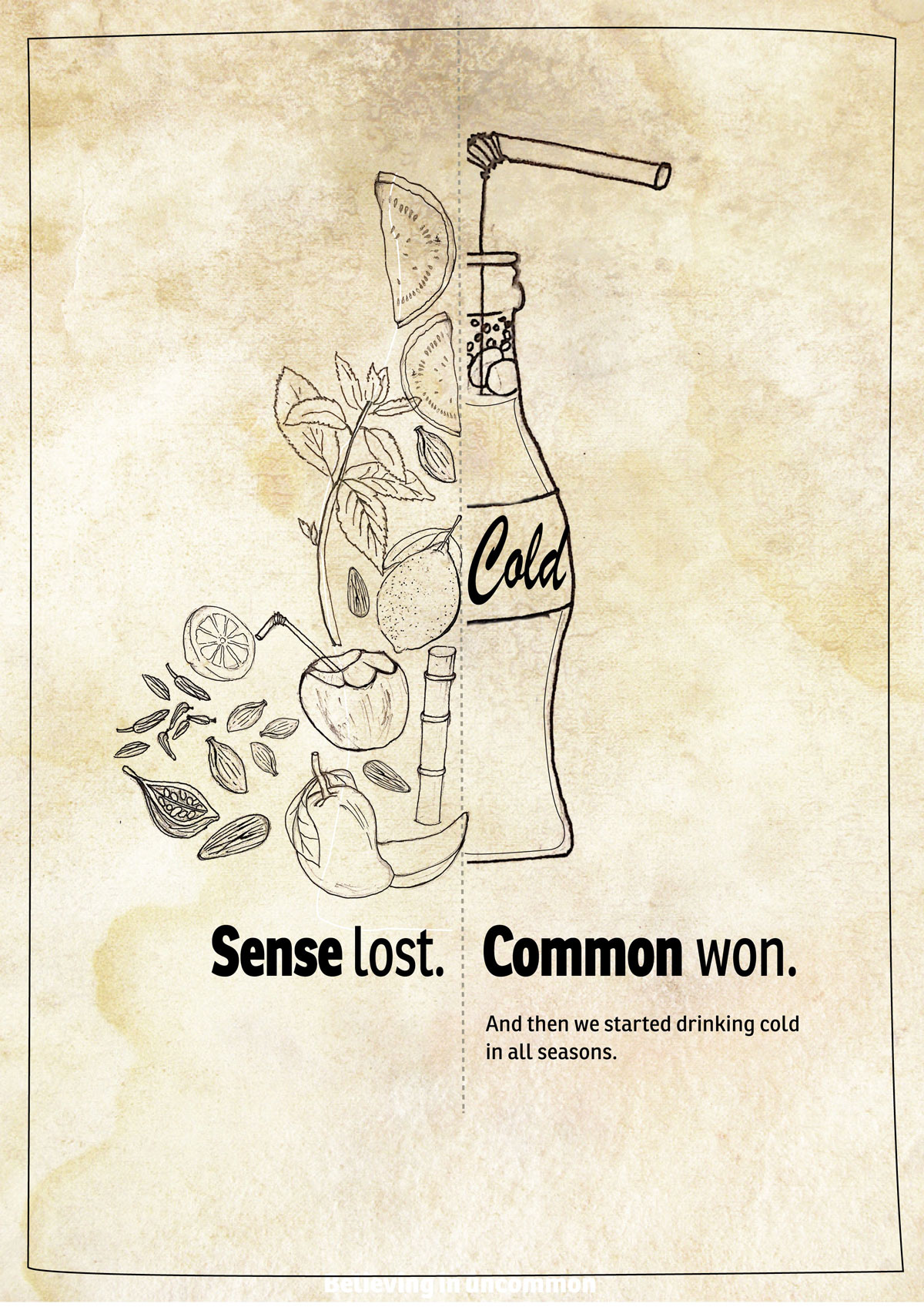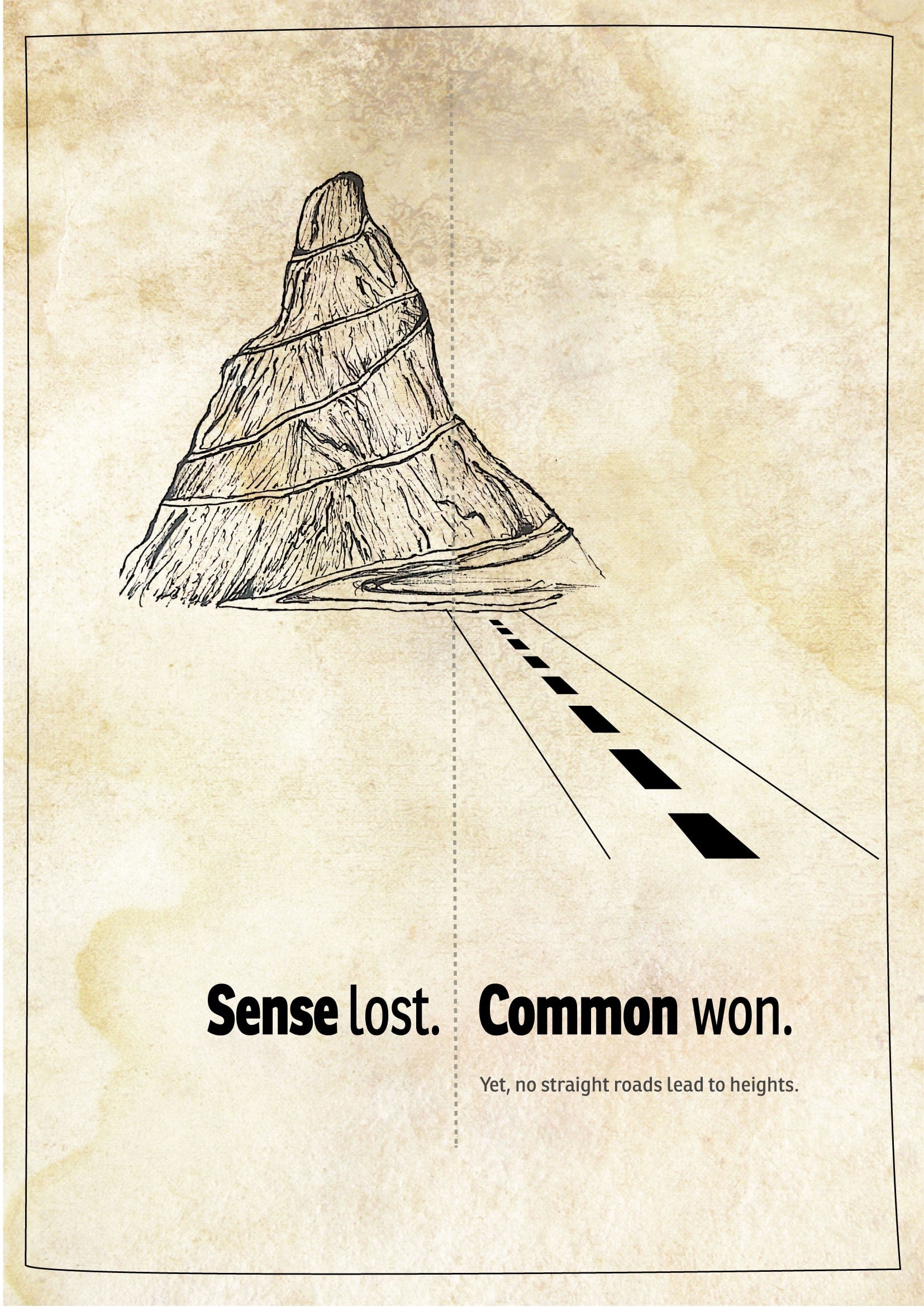
UNCOMMON SENSE
Do you think ‘common’ sense leads to a loss of ‘sense’?
Wikipedia defines ‘common sense’ as a basic ability to perceive, understand, and judge things that are shared by (“common to”) nearly all people and can reasonably be expected of nearly all people without need for debate.
This is the widely accepted definition of ‘common sense’. But were we born like this? Did we always have ‘common’ inclinations? If not, where did ‘common sense’ really start?

As children, we don’t know how to make straight lines. As we grow up, we’re taught that straight is simple, that it is perfect, that it is ideal. In nature, there are never any straight lines. But with progression, we’ve made everything straight and common.
In this process, we lost our own expression and we all became the same; we took the idea of a ‘common’ sense so seriously that we all became in favour of a sense that must be common in all of us. Thus, we tried to identify several uncommon senses that exist all around us, the uncommon senses that have now become common in pursuit of a ‘common’ sense and we have only one question: Why be Common when you can be Sense-ible?

Trees grow organically taking their own form, their own course in several diverse and eclectic ways. Their lines are wavy, moving in all directions and untamed. But what do we do with these trees? Cut them all up through machines in the same way and make wooden planks out of them. After this, there is no way one tree can be identified from the other; all trees come under a common umbrella called ‘wood’ and they lose their own sense.

We are all given different body types: some at, some bulky, some curvy, some wavy, etc. If our body types would be reduced to lines we would see how exclusive they all are. Fashion, however, moves away from this. When we draw fashion figures or see fashion models, we are told that a certain kind of at, straight, edgy, sharp body type is the ideal place to be and that we must all become that. In doing this, we leave our own individual beauty, our own mold and move towards a ‘common’ idea of perfectionism.

Traditionally, clothing had a function, a geographical, social and cultural relevance to it. For instance, Rajasthani men would wear big paghdis (turbans) to keep them shade from the heat, dhotis would be worn in summers for ease of movement and ventilation of air. Now, we’re all moving towards only one kind of clothing that advertisements call ‘cool’ ‘trendy’ and ‘in fashion’.
If we do not follow this trend, we may not be socially acceptable or even be laughed at. In this process, we have forgotten about a diversity that clothing has to offer in different seasons, in different contexts, etc. and have moved towards a ‘common’ expression of clothing called ‘jeans’.

Our thumbprints are all unique; there can never be any two thumbprints with the same formation of lines. However, if we were to follow ‘common’ sense, they would all lose their unique sensibility of formation and start following an even, one directional pattern. Since thumbprints stand of our unique identity, all our identities would get standardized and it would become impossible to differentiate one person from another.

All birds build there nests with different kinds of materials: pieces of cloth, grass, hay, wires, etc.; they all have different requirements in terms of the form of their nest, the spacein it, the place it needs on a tree, etc. Thus, all bird nests have unique forms and look beautiful in their own might. We, however, decide that these birds need a new home made out of straight plates of metal and this one kind of home becomes a home for all birds. By doing this, we cage their essential sense of flying and their sense of what their own home must be like.

As kids when we built sand houses, we put our own minds and hearts into what our own house should look like as per our own understanding, our own desires and with our own sense of expression we built them. Then, when we grew up, we lived in straight, boxy, matchboxes looking all the same. This is not only a question of affordability; small houses can have our own taste, our own flavor as well, if only we let them.

Summers mean its time to keep ourselves cool. Historically, people used to take to several natural agents that by their very nature are cooling for the body. There was, thus, diversity in what all could be consumed for coolness such as coconut water, sugarcane juice, lemon, watermelon, khas, mint leaves, etc. However, over time, our idea of cooling ourselves became a artificially flavored and sweetened, carbonated cold water called a ‘cold drink’. We all developed a ‘common’ taste for these drinks and left behind a diversity of flavor, taste and nature itself.

Human beings did not create hills and mountains; they were given to us by nature. Hilly and mountainous roads have their own sense of movement; each mountain different from the other and thus, creating unique experiences of their own. However, when we create straight highways for our own needs of faster travel and transportation, we miss out on the experience of these uneven, twisted roads. Straight roads might get us to places faster but they do not take us to heights.
Thoughts And Feelings
Team Gaatha
